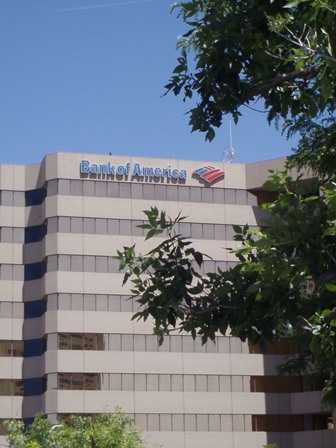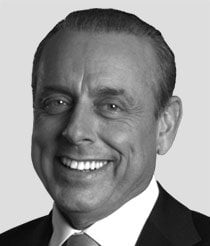Something happened last Wednesday that is eye-opening, on several levels.
The Consumer Financial Protection Bureau (CFPB) and the Office of Comptroller of the Currency (OCC) slammed one of the nation's biggest banks: Bank of America (NYSE: BAC).
It turns out BofA, like several other financial giants, is a billion-dollar fraud machine.
Plop, plop, fizz, fizz (that's me dropping my Alka-Seltzer), oh, what a surprise it is...

Only this latest scheme could have taken money directly from your pocket... and someone needs to be locked up.
Why Aren't These BofA Fraudsters Going to Jail?
The CFPB looked back as far as 2001 into BofA's marketing and sales of "add-on" products.
And it wasn't a surprise to the CFPB (I'll get to why it wasn't in a minute) that Bank of America had ripped off their beloved credit card customers by selling them stuff like identity theft protection and credit protection programs, without ever actually providing much of anything.
I'm not going to talk about the OCC's part in this because the OCC has only lately been flexing its puny muscles and was in LaLa Land before, during, and after the financial crisis and is a useless regulator, really just playing tag-along on the shoulders of the CFPB. Oh wait, I just did talk about them.
Anyway, CFPB Director Richard Cordray, a really great - make that a bloody amazing - crusading white-knight regulator said in a call with reporters, "We will continue to be vigilant in pursuit of anyone who deceives or mistreats consumers."
Deborah Morris, the CFPB's deputy enforcement director, estimated about 1.5 million consumers paid at least $459 million just for identity protection products.
The joint-agency enforcement action also alleges the bank used deceptive marketing tactics when selling a payment protection product meant to cancel the customer's debt if they experienced an involuntary hardship.
Check out the gory rip-'em-off details from Cordray himself - seriously, you can't make this stuff up:
"For example, one (telemarketer) script we reviewed stated that with 'Credit Protection Plus,' Bank of America would cancel up to 18 months of the consumer's minimum balance if the consumer was admitted to the hospital for as little as one night," Cordray said. "In reality, a single night's hospital stay would only entitle consumers, who successfully navigated Bank of America's claims process, to one month of benefits - not the 18 months claimed in the scripts."
All in all, the shady marketing and billing business - heck, let's call the outright fraud the bank screwed its customers with - resulted in a consent order making them pony up $727 million (BofA calculates it at $738 million) in customer restitution and $45 million in fines and penalties.
Restitution is great, but a $45 million penalty? For fraud?
Seriously, if anyone else but a big bank, a big protected bank, had committed this kind of fraud, someone would be going to jail.
What drives me to my Alka-Seltzer and other relief concoctions is the headache and heartache I get when no one who is responsible for these fraud schemes goes to jail.
It's a bank; there are lines of authority, of management, of orders, and an order trail. Who planned on not delivering the services? Who said we'll just take their money? Someone, really several people, had to plan this. Offering services that aren't delivered just doesn't "happen" by itself.
Okay, that's a long discussion. But we both know the Too Big to Fail banks are criminal enterprises - protected criminal enterprises.
More Fraudsters Coming Right Up
Bank of America wasn't the only player of this game of frauds.
The CFPB's Cordray says, "Through five enforcement actions the Bureau has taken to date on credit card add-on products, we have now put nearly $1.5 billion back into consumers' pockets. We intend to continue cleaning up this market as necessary to ensure that consumers are treated fairly."
They've been looking at add-on products since the agency's inception three years ago. Their first enforcement action came in July 2012 against Capital One Financial Corp. for using vendors who aggressively marketed and sold similar add-on products. Next, Discover reached a $214 million settlement over allegations that it improperly marketed payment protection and identity theft services to credit card customers.
American Express paid a $76 million settlement in December based on allegations of deceptive marketing and unfair billing practices selling credit card add-on products to its customers.
American Express in late 2012 was charged $112 million in fines and refunds on allegations that it violated debt-collection practice laws, discriminated against new customers based on age, and failed to report consumer disputes to the credit bureaus.
According to an American Banker article today, "Most of these companies have since either stopped offering or changed their credit card add-on products. But that has not slowed down the agency."
"We're going to continue to look at these problems as we become aware of them and determine in each case what action is appropriate," said Morris, the CFPB's deputy enforcement director.
Now, if they can just build a big enough jail...
Investor Alert: The shellacking the markets took last Thursday is a bearish omen, but a market correction wouldn't necessarily be a bad thing. In fact, volatility creates tremendous opportunity. Here are three ways you can turn fear into profit.
About the Author
Shah Gilani boasts a financial pedigree unlike any other. He ran his first hedge fund in 1982 from his seat on the floor of the Chicago Board of Options Exchange. When options on the Standard & Poor's 100 began trading on March 11, 1983, Shah worked in "the pit" as a market maker.
The work he did laid the foundation for what would later become the VIX - to this day one of the most widely used indicators worldwide. After leaving Chicago to run the futures and options division of the British banking giant Lloyd's TSB, Shah moved up to Roosevelt & Cross Inc., an old-line New York boutique firm. There he originated and ran a packaged fixed-income trading desk, and established that company's "listed" and OTC trading desks.
Shah founded a second hedge fund in 1999, which he ran until 2003.
Shah's vast network of contacts includes the biggest players on Wall Street and in international finance. These contacts give him the real story - when others only get what the investment banks want them to see.
Today, as editor of Hyperdrive Portfolio, Shah presents his legion of subscribers with massive profit opportunities that result from paradigm shifts in the way we work, play, and live.
Shah is a frequent guest on CNBC, Forbes, and MarketWatch, and you can catch him every week on Fox Business's Varney & Co.



